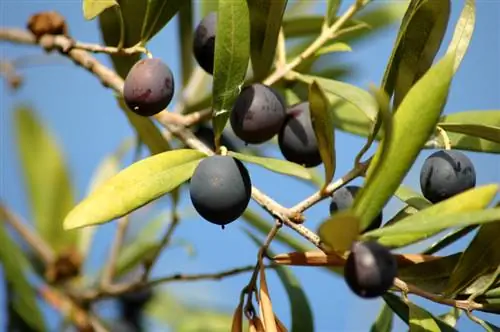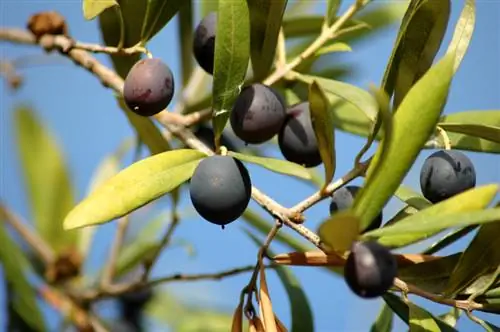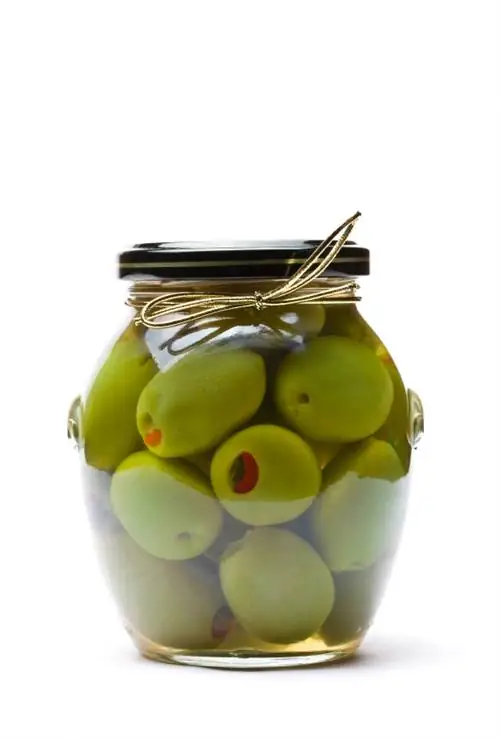- Author admin [email protected].
- Public 2023-12-16 16:46.
- Last modified 2025-01-23 11:19.
Green olives are unripe, black olives are always ripe? This statement is basically true, because ripe olives are always dark, often aubergine-colored to black-blue. Green olives, on the other hand, are always harvested unripe. But be careful: Black olives from a can are usually colored - this saves production costs and drives up prices.

What is the difference between green and black olives?
Black olives are ripe, dark and soft oil fruits with a mild taste and a high content of unsaturated fatty acids. Green olives, on the other hand, are unripe, firmer and have a bitter taste. Some black olives are artificially colored to meet demand and reduce production costs.
Black olives contain more unsaturated fatty acids
Green and black olives are not different varieties, but rather different levels of ripeness. The riper an olive is, the darker and softer it becomes - and the milder and more aromatic its taste. Green olives, on the other hand, taste more tart and their flesh is firmer and juicier. However, green and black olives differ not only in appearance and taste, but also in their nutritional value. Ripe olives contain much more oil than unripe olives, which on the one hand makes them more valuable for a he althy diet, but on the other hand also makes them higher in calories. For comparison: 100 grams of green olives contain an average of around 140 kilocalories, while the same amount of black olives contains approx.350 kilocalories.
Why producers color olives black
Many consumers appreciate the milder taste and higher he alth value of black olives and therefore prefer to buy them. However, harvesting ripe olives is not an easy task, and the farmer must not miss the right harvest time. While green olives - which are very firm - can simply be shaken from the tree, the soft black olives have to be laboriously picked by hand. That costs time and therefore money. For this reason, many olive producers simply dye green fruits black in order to meet demand. According to current laws, the dyeing process is legal and does not need to be specially labeled.
Dyed olives not harmful to he alth
Green olives are dyed black with iron II gluconate or iron II lactate. These iron s alts are obtained from conventional lactic acid and are not considered to be harmful to he alth. However, colored green olives in no way taste like sun-ripened black olives, but simply as what they are: green olives. Ergo, colored olives have a tarter and firmer taste than the ripe harvested oil fruits.
How to distinguish colored olives from ripe ones
- for packaged goods, it is worth taking a look at the list of ingredients: E 579 and E 585 are the identification numbers for the coloring iron s alts
- dyed olives show a uniform dark color, which is not the case with ripe olives
- ripe olives have very different dark colors
- ripe olives have a dark core, colored ones have a light one
- ripe olives taste more aromatic and are softer than green ones
Tips & Tricks
If you would like to grow an olive tree yourself, then simply bring a fresh (i.e. not pickled or otherwise preserved!) fully ripe black olive with you from your next trip to the Mediterranean region. However, seeds are also available in specialist shops.






